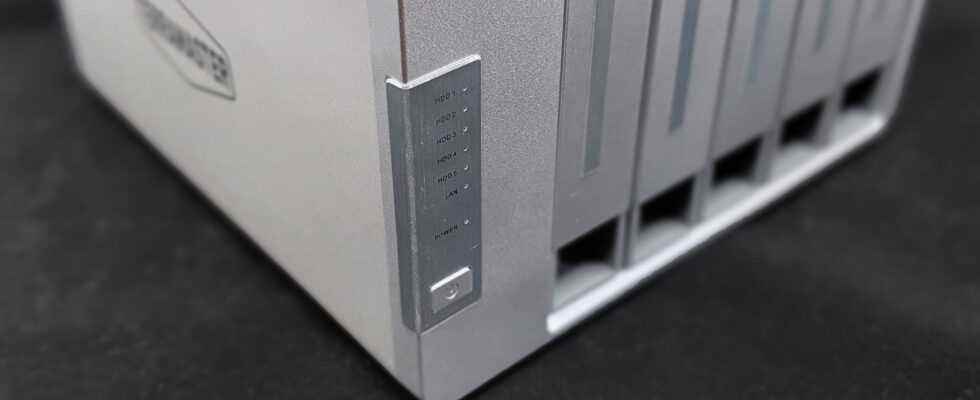Thanks to the release of the new version of the TOS software which equips its SINTerraMaster returns to RAID management.
A few weeks ago, we offered you the test of the F4-243, one of the latest TerraMaster NAS models. Since then, the Chinese has upgraded the TerraMaster Operating System, the software interface of its devices, to upgrade to TOS 5.0.
Improve RAID 5 or even RAID 6
TerraMaster has revised multiple segments of its software interface, but today it is the storage part, and more particularly RAID, which is at the heart of the manufacturer’s concerns.
Like what Synology can offer with its Synology Hybrid RAID (SHR), TerraMaster has therefore imagined the TerraMaster Flexible Disk Array, or TRAID. The objective remains the same as at Synology: to improve RAID in order to make it more efficient and more flexible.
You should know that depending on the number of storage bays/units you have on your NAS, it is possible to configure a RAID 5 stack (at least 3 disks) or RAID 6 (at least 4 disks). These modes offer several advantages over a basic JBOD stack.
First, since the data is distributed over several discs at the same time, we benefit from better speeds. The second advantage is redundancy, because, for each piece of data, a parity system makes it possible to “reconstitute” the information if one (RAID 5) or two (RAID 6) disks fail.
The TerraMaster Flexible Disk Array therefore dares to propose to improve all this a little and to come back to certain weaknesses of RAID 5/RAID 6.
Fewer capacity losses
First, TRAID is less constraining than classic RAID. With RAID 5, we are limited by the capacity of the smallest of the disks used. If one disk is 3 TB, it doesn’t matter whether the others are 6 or 8 TB, the usable space is blocked at 3. This is not the case with TRAID, which takes care of combining and associating the disks in according to their abilities.


The same comparison in more detail © TerraMaster
The result is much less wasted space by setting up multiple sub-segments, depending on the size of the disks. This system has another advantage: it makes it possible to replace a disk with a larger capacity model and to exploit said capacity. On a classic RAID, you have to recreate the stack to change its size.
The same is true if adding units to the stack. TRAID does this transparently. And since we’re talking about the number of disks, let’s point out that TRAID works the same way as RAID 5: one disk is used for parity. TRAID+ is comparable to RAID 6: redundancy covers the loss of a maximum of two disks at a time.

Finally, it is interesting to note that TRAID to TRAID+ migration is quite possible. This is done simply, if desired, when the minimum number of disks necessary for TRAID+ is reached, that is to say four units.
Source : TechPowerUp

1